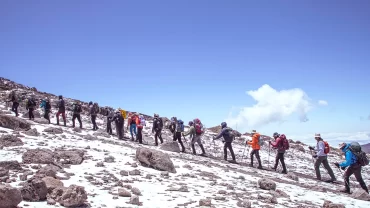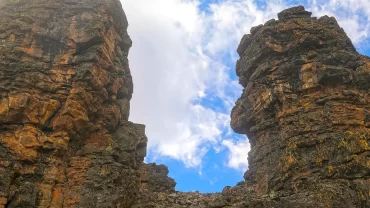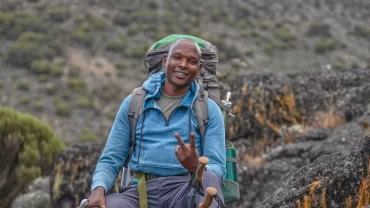Wildlife photography on safari is one of the most exciting yet challenging forms of photography. Unlike studio or landscape photography, you have little control over lighting, subject movement, and the environment. The unpredictability of safari conditions demands a combination of technical skill, patience, and the right equipment. Whether you’re capturing a lion’s golden-hour yawn, a herd of elephants crossing the savanna, or a cheetah’s high-speed chase, having a strategic approach is key. In this guide, we break down expert tips for mastering wildlife photography on safari, covering essential gear, shooting techniques, and the best locations to capture breathtaking shots.
1. Essential Camera Gear for Safari Photography
The right equipment can make all the difference when shooting wildlife. Given the fast-paced and dynamic nature of safaris, professional photographers should come prepared with high-quality gear.
- Pro-Grade Camera Bodies: Full-frame mirrorless and DSLR cameras provide the best low-light performance and fast autofocus. Recommended choices include:
- Canon EOS R5/R3 – Excellent autofocus, high frame rate, and reliable image quality.
- Sony A1/A9 II – Industry-leading autofocus, high resolution, and fast burst mode.
- Nikon Z9/D6 – Robust build, high dynamic range, and superb tracking for fast-moving wildlife.
- Lens Selection:
- Super-Telephoto (200-600mm) – Essential for close-up shots of distant wildlife, especially birds and predators.
- Wide-Angle (16-35mm) – Captures stunning landscapes with wildlife in the foreground for storytelling.
- Mid-Range Zoom (70-200mm) – Ideal for versatile shooting, covering various perspectives of wildlife behavior.
- Tripods, Monopods & Bean Bags:
- Bean bags – Best for stabilizing your camera when shooting from a safari vehicle.
- Monopods – Provides better mobility and stability for long-lens shooting.
- Tripods with Gimbal Heads – Useful in certain safari lodges where tripod use is allowed.
- Filters (Polarizers & ND Filters):
- Polarizing Filters – Reduce glare and enhance colors in harsh daylight.
- Neutral Density (ND) Filters – Allow for creative motion blur in flowing water or slow-moving animals.
- Backup Equipment:
- Carry dual camera bodies to avoid changing lenses in dusty conditions.
- Extra batteries and memory cards to handle long hours in the field.
- A waterproof, dustproof bag to protect gear from the elements.
2. Mastering Camera Settings for Safari Photography
For professional-grade wildlife photography on safari, understanding and adjusting your camera settings is crucial for capturing sharp, well-exposed images in different lighting conditions.
- Shutter Speed:
- 1/2000s or higher – For fast-moving subjects like birds in flight or cheetahs running.
- 1/1000s to 1/1600s – Standard for walking animals such as lions and elephants.
- 1/250s to 1/500s – For stationary animals and environmental shots.
- Aperture:
- f/4 to f/8 – Isolate the subject with a creamy bokeh effect.
- f/11 to f/16 – Increase depth of field for sharper landscape-integrated shots.
- ISO Management:
- Use ISO 100-400 in bright daylight conditions.
- Push to ISO 800-3200 in low light, ensuring modern noise reduction software is available.
- Autofocus Techniques:
- Animal Eye Tracking AF – Available in Sony, Canon, and Nikon systems for precise focusing.
- Zone AF & Continuous Tracking – Helps capture dynamic wildlife movement without losing focus.
3. Best Safari Locations for Wildlife Photography
For the best wildlife photography on safari, choosing the right location is just as important as having the right gear. Here are some of the top destinations in Tanzania:
- Serengeti National Park:
- Best for: The Great Migration, lion hunts, vast golden plains.
- Key shots: River crossings, predator-prey interactions, herds of wildebeests.
- Ngorongoro Crater:
- Best for: High-density wildlife, diverse landscapes, excellent lighting.
- Key shots: Close-up portraits of rhinos, panoramic shots of the crater floor.
- Tarangire National Park:
- Best for: Elephant herds, unique baobab trees, stunning sunsets.
- Key shots: Silhouettes of elephants, herds crossing rivers.
- Ruaha National Park:
- Best for: Leopards, wild dogs, fewer tourists for intimate shooting.
- Key shots: Big cat encounters in a wild, untamed landscape.
- Selous Game Reserve:
- Best for: River-based photography, hippos, and crocodiles.
- Key shots: Close-ups of aquatic wildlife from boat safaris.
4. Adapting to Lighting & Weather Conditions
Natural light plays a major role in wildlife photography on safari. Here’s how to adjust to different conditions:
- Golden Hour Shooting:
- Best practice: Shoot early mornings and late evenings for soft, warm lighting.
- Adjustments: Use lower ISO and wider apertures to maximize quality.
- Midday Sun Challenges:
- Best practice: Use shadows creatively, expose for highlights.
- Adjustments: Use ND filters to reduce harsh light exposure.
- Overcast Conditions:
- Best practice: Great for even lighting, enhances fur and feather details.
- Adjustments: Slightly increase exposure compensation.
- Dust & Rain Protection:
- Best practice: Use lens hoods and rain covers.
- Adjustments: Clean lenses frequently and store cameras in airtight cases.
5. Composition Techniques for Stunning Wildlife Photography
- Framing & Perspective: Low-angle shots create more dynamic, powerful images.
- Rule of Space: Leave space in the frame for an animal’s direction of movement.
- Capturing Expressions & Behavior: Look for interactions between species, playful cubs, or intense stares.
- Storytelling in Wildlife Photography: Use a series of shots to depict hunting, grazing, or animal family life.
6. Ethical & Practical Considerations for Wildlife Photography
- Respecting Animal Boundaries: Never interfere with natural behavior.
- Choosing Ethical Safari Operators: Work with conservation-minded guides.
- Minimizing Impact: Keep a safe distance, use silent shooting modes, and avoid flash.
Conclusion
Mastering wildlife photography on safari requires a blend of skill, patience, and understanding of animal behavior. By using the right gear, refining camera settings, and adapting to different lighting conditions, photographers can capture stunning, once-in-a-lifetime shots. Whether you’re framing a lion’s piercing stare, a herd of elephants silhouetted against the setting sun, or a leopard resting on an acacia branch, Tanzania’s diverse landscapes and wildlife provide endless opportunities for spectacular photography.
Are you ready to elevate your wildlife photography? Plan your next safari with a photography-first operator and capture Africa’s incredible wildlife like never before!





Comment (0)